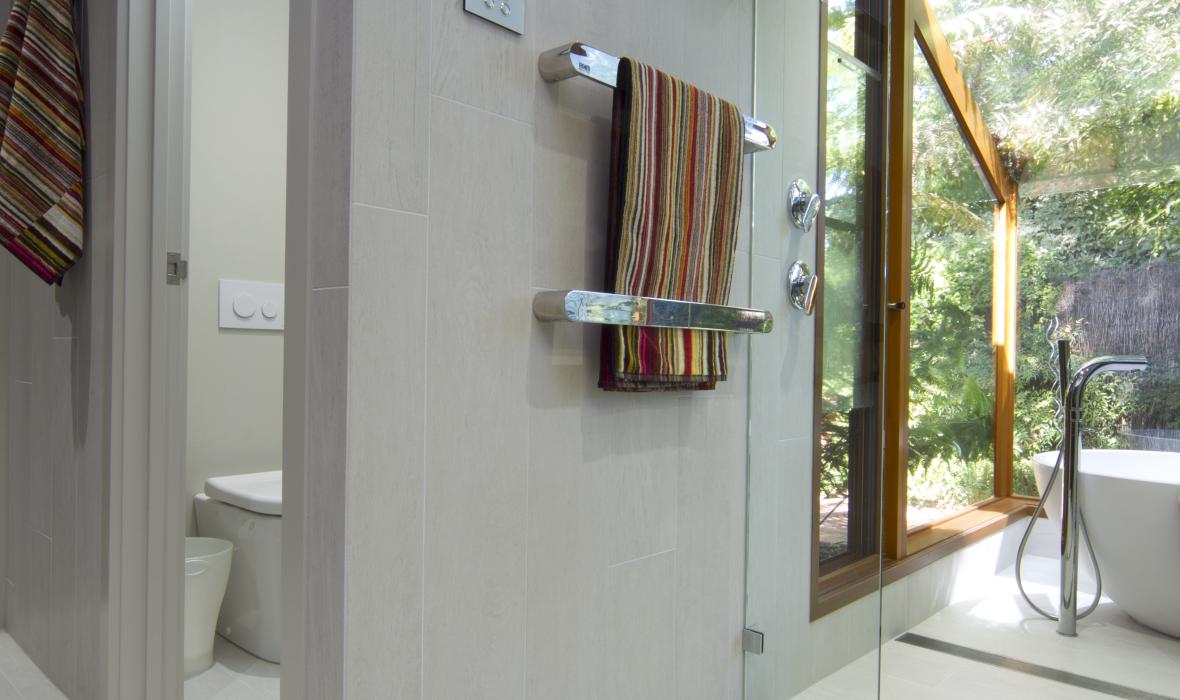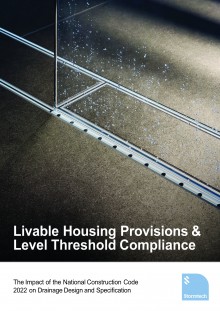
Dependable drainage is indispensable to good building design. Knowing which system will best work for your needs will not only provide long-term cost and time-saving benefits, but essential provisions for the health, amenity and safety of building occupants. Here are some of the key considerations for your bathroom drainage project to help architects, specifiers, builders and skilled DIY practitioners select and implement the best drainage solutions.
1. Unique Design Concerns: Traditional vs. Linear
One of the most important decisions when considering bathroom drainage is how it will be incorporated into an existing room layout.
Traditional bathroom setups are designed with a single, fixed- positioned, primary drainage trap, which typically houses the central floor waste outlet (or overflow gully) for the entire bathroom. It is from this centralised drainage point that all other waste outlets from the bathroom’s fixtures (showers, basins, bathtubs etc.) are connected, forming the bathroom’s interconnected pipe system.
An increasing number of bathrooms are plumbed with separate traps for each fixture, allowing for a more flexibility in your drainage system layout - ideally suited to lineal systems.
While traditional floor waste systems require 4-way grading of floors, and a separate hob to contain water flow, linear grates can be located anywhere within the bathroom/shower area, requiring a simple 2-way floor grading towards the channel.
2. Waterproofing Requirements
Recent changes to the Australian Standards to AS-3740 (‘Waterproofing of wet areas within residential buildings’) introduced in 2010, means builders and designers must abide by strict waterproofing compliance measures to ensure interior spaces are protected from unwanted water incursions.
Your choice of surface material(whether tile,timber,stone or vinyl) will significantly impact your waterproofing requirements and requisite application of water-resistant membranes. Likewise, your building substrate material (whether wood or concrete) will ultimately determine the type of waterstop required for full BCA compliance (for specific waterproofing guidelines, please refer to AS- 3740.)
3. Exposure to the Elements
Seldom considered for interior surfaces, properties located in areas exposed to high airborne salinity (e.g. near breaking surf beaches) require extra precautions to protect drainage systems from corrosion.
Electropolishing offers one of the most effective means to protect grates from harsh or corrosive environments, passivating rust-sensitive iron concentrations in stainless steel grates most prone to oxidation.
Stormtech works proactively with plumbing advisory services to ensure drainage is not only fit for purpose, but meets stringent Building Code of Australia (BCA) compliance measures.

